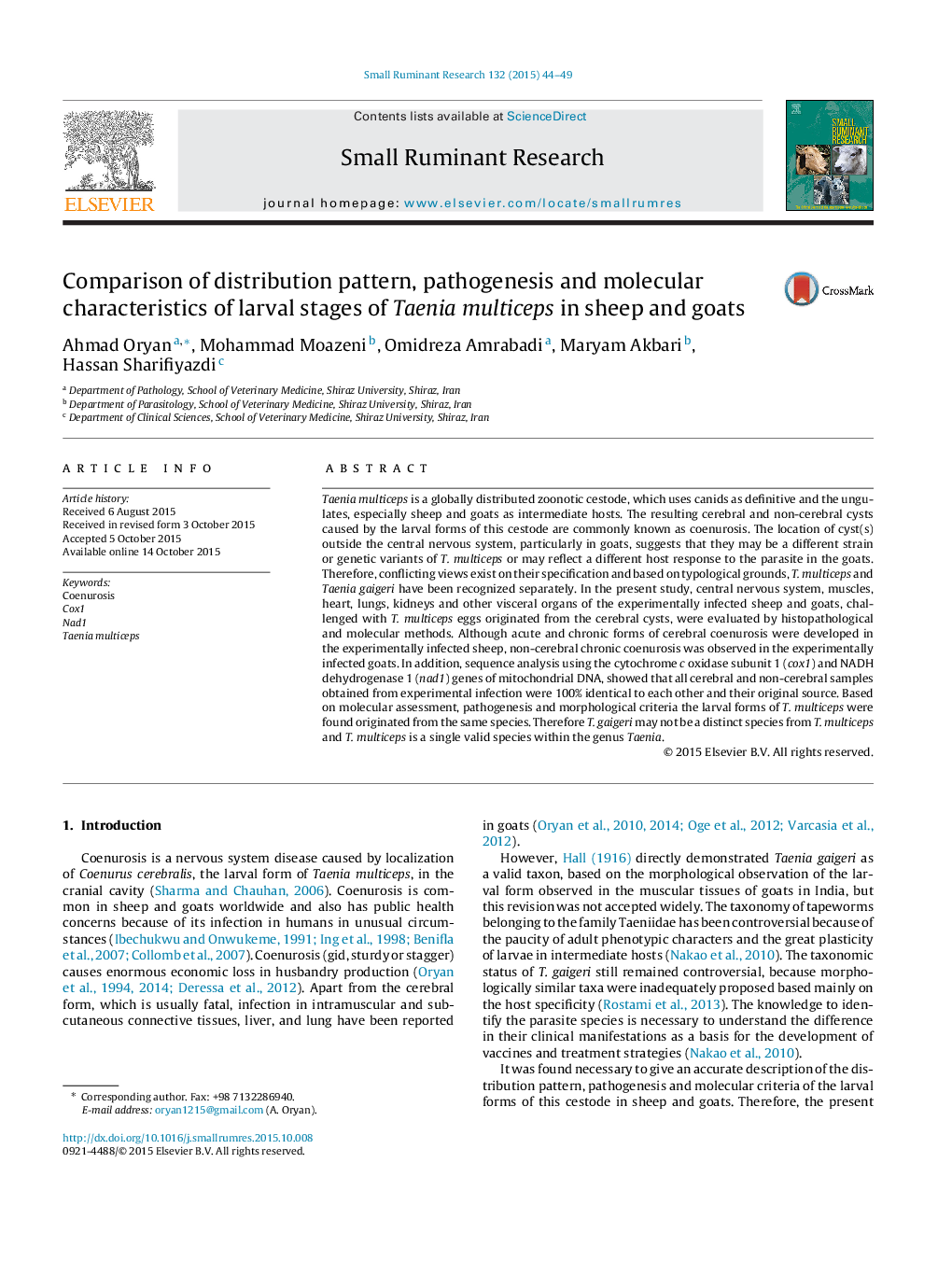| Article ID | Journal | Published Year | Pages | File Type |
|---|---|---|---|---|
| 5795449 | Small Ruminant Research | 2015 | 6 Pages |
â¢The obtained eggs from adult worms were orally inoculated to two groups of sheep and goats.â¢Acute and chronic forms of cerebral coenurosis were developed in the experimentally infected sheep.â¢Non-cerebral chronic coenurosis was observed in the experimentally infected goats.â¢T. multiceps is the single origin of both cerebral and non-cerebral forms of Coenurus cerebralis.â¢The molecular features of the cysts of two different groups were identical.
Taenia multiceps is a globally distributed zoonotic cestode, which uses canids as definitive and the ungulates, especially sheep and goats as intermediate hosts. The resulting cerebral and non-cerebral cysts caused by the larval forms of this cestode are commonly known as coenurosis. The location of cyst(s) outside the central nervous system, particularly in goats, suggests that they may be a different strain or genetic variants of T. multiceps or may reflect a different host response to the parasite in the goats. Therefore, conflicting views exist on their specification and based on typological grounds, T. multiceps and Taenia gaigeri have been recognized separately. In the present study, central nervous system, muscles, heart, lungs, kidneys and other visceral organs of the experimentally infected sheep and goats, challenged with T. multiceps eggs originated from the cerebral cysts, were evaluated by histopathological and molecular methods. Although acute and chronic forms of cerebral coenurosis were developed in the experimentally infected sheep, non-cerebral chronic coenurosis was observed in the experimentally infected goats. In addition, sequence analysis using the cytochrome c oxidase subunit 1 (cox1) and NADH dehydrogenase 1 (nad1) genes of mitochondrial DNA, showed that all cerebral and non-cerebral samples obtained from experimental infection were 100% identical to each other and their original source. Based on molecular assessment, pathogenesis and morphological criteria the larval forms of T. multiceps were found originated from the same species. Therefore T. gaigeri may not be a distinct species from T. multiceps and T. multiceps is a single valid species within the genus Taenia.
